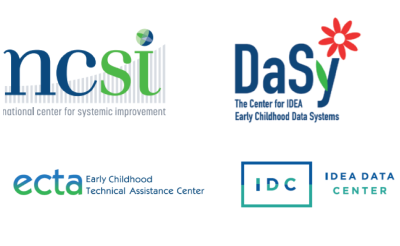Site Search
Results 1 - 7 of 37
Format: Quick Reference
Comprehensive IDC Part B Tool & Product ListThis resource is a list of IDC produced Part B tools and products arranged by topic area. The list provides a brief description and link to each tool or product. Users can quickly scan for useful tools and products to ensure that they have explored all of the many Part B available resources that IDC has produced.
Format: Guides and Briefs
A State Guide on Identifying, Correcting, and Reporting Noncompliance with IDEA RequirementsThe Individuals with Disabilities Education Act (IDEA) requires states to monitor and enforce IDEA Part C and Part B requirements, with a primary focus on those requirements that are most closely related to improving results and functional outcomes for infants, toddlers, and children with disabilities. To support states to carry out these monitoring responsibilities, A State Guide on Identifying, Correcting, and Reporting Noncompliance with IDEA Requirements describes the IDEA requirements related to identifying noncompliance, making findings of noncompliance, correcting and verifying correction of noncompliance, and federal reporting on compliance and correction of noncompliance in the state’s SPP/APR. This guide is based on the Office of Special Education Programs (OSEP) Memo 09-02: Reporting on Correction of Noncompliance in the Annual Performance Report Required under Sections 616 and 642 of the Individuals with Disabilities Education Act and the OSEP Frequently Asked Questions on Identifying and Correcting Noncompliance and Reporting on Correction in the SPP/APR.
This companion resource to A State Guide on Identifying, Correcting, and Reporting Noncompliance with IDEA Requirements summarizes the responsibilities of local early intervention programs or Local Education Agency, state Lead Agency or State Educational Agency and data that needs to be reported to OSEP on compliance, correction of noncompliance and verification of correction for SPP/APR indicators.
Format: Applications and Spreadsheets
Business Rules Documentation ProtocolThe Business Rules Documentation Protocol is a customizable Excel template that states can use for documenting, recording, and communicating existing business rules or data quality validation checks they perform during the collection and validation of IDEA Part B data.
Format: Toolkits
Data Meeting ToolkitThe Data Meeting Toolkit is a suite of tools that groups can use to guide conversation around data and support data-based decisionmaking. The toolkit provides resources to support success before, during, and after data meetings.
Format: Applications and Spreadsheets
Data Sources for Calculating Significant DisproportionalityData Sources for Calculating Significant Disproportionality provides a summary of the data needed to calculate significant disproportionality for identification, placement, and discipline. For each category of analysis, this resource provides a description of the data needed to calculate the risk numerator and risk denominator, and notes the relevant EDFacts file specifications, including which subtotals or category sets, as appropriate.
Format: Applications and Spreadsheets
EDFacts IDEA Discipline Data InfographicThe EDFacts IDEA Discipline Data Infographic provides basic information about the EDFacts file specifications states use to submit IDEA Discipline data to the U.S. Department of Education. The infographic outlines details about Discipline data for children and youth with disabilities ages 3 through 21 that states must include in their annual submission of EDFacts files FS005, FS006, FS007, FS088, FS143, and FS144.
Format: Guides and Briefs
Examining Representation and Identification: Over, Under, or Both?Significant disproportionality with regard to identifying children as children with disabilities or as children with specific disabilities is, by definition, overrepresentation. This resource defines overrepresentation and three related terms: over-identification, under-identification, and underrepresentation. States can use this resource, in conjunction with the Success Gaps Toolkit to help identify and address the factors contributing to significant disproportionality (i.e., overrepresentation) within school districts.








